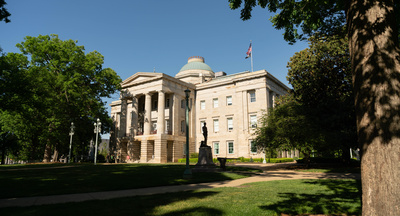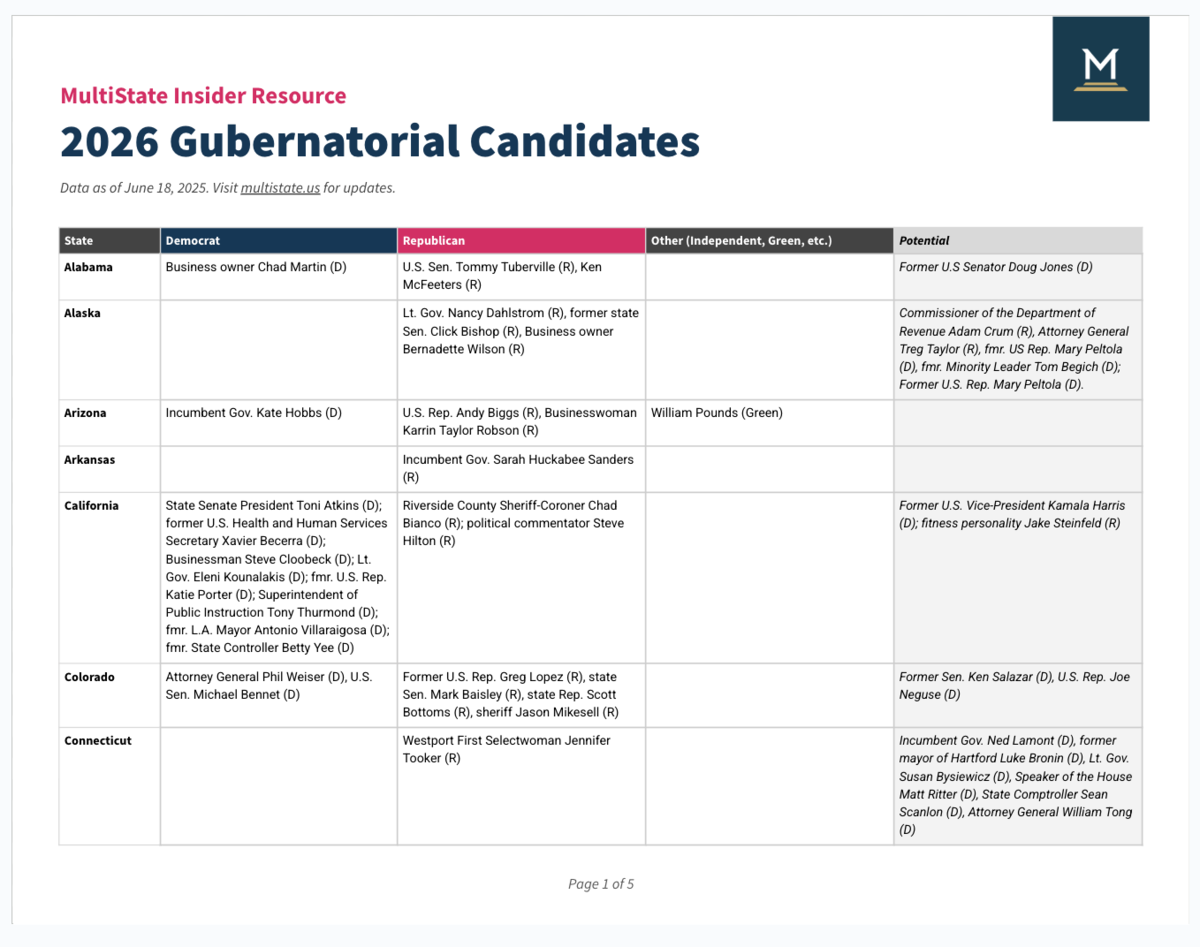
State Government Affairs, Elections & Campaigns
How Lieutenant Governors Are Selected (And Why It Matters)
December 10, 2025 | Bill Kramer
July 1, 2025 | Maggie Mick
-d868d2-1200px.jpeg)
Key Takeaways:
This year (2025) is an “off” election year, only two states have gubernatorial contests and only one — New Jersey — had a primary. Next year will feature the gubernatorial Super Bowl with a whopping 36 state contests. The success of your 2027 advocacy plans will be impacted by who wins these races. Here, we’ve broken down some trends on the types of candidates pursuing many states’ top executive office to inform your stakeholder engagement strategy over the next year. Government affairs requires perpetual evaluation of your relationship pipeline.
Of the eight open gubernatorial races in 2024, three attorneys general (plus one former) ran and won the governorship in Washington, North Carolina, West Virginia, and New Hampshire. Currently, there are 23 states with Democratic governors. Of those executives, six (Kentucky, Washington, North Carolina, Pennsylvania, Massachusetts, Maine) ascended from the position of attorney general. In contrast, there are 27 states led by Republican governors. Of those, six (Ohio, Louisiana, South Carolina, West Virginia, Texas, New Hampshire) were attorneys general before winning the top job. That’s 12 of the 50 using the office of AG to secure the governor’s mansion.
We’ve long heard the phrase “AG stands for aspiring governor” but not until recent years did we see it consistently achieved. AGs are becoming more political and organized across state lines in their work, snagging national headlines and leveraging the powers of the office to advance larger political agendas.
However, even with this recent assertion and uptick in the gubernatorial ranks, lieutenant governors continue to be the most consistent path to the governorship.
At this time, 16 sitting governors are former National Lieutenant Governors Association (NLGA) Members (i.e. defined as lieutenant governors or seconds-in-command). These states are Alabama, Arizona, California, Hawaii, Idaho, Iowa, Mississippi, Missouri, New York, Northern Mariana Islands, Ohio, Rhode Island, South Carolina, South Dakota, Utah and Vermont.
In all, over 50% of our nation’s current governors are former AGs or Lt. Governors. Engaging and building relationships with these leaders before they are the state’s top official is a wise and critical use of your time and resources. To that end, there are a number of organizations that serve these two constituencies:
Not only do these organizations convene these elected stakeholders multiple times per year allowing you to build relationships and educate them on your issues but oftentimes, candidates also attend these convenings. It is not uncommon to see future attorneys general at RAGA and DAGA meetings two years before they win election and just last week, we heard from Virginia Lt. Gov. Winsome Earle-Seares (R) at the RGA Corporate Policy Summit in Nashville.
Through our Stakeholder Engagement practice, we work with all of these organizations and engage these leaders to advance our clients’ agendas. You can read more about our Stakeholder Engagement practice here, check out additional resources here, or contact us to learn more about how we are in the best position to support and prepare you for the Super Bowl season ahead.
While November 2026 may seem far away, there has already been a flurry of candidates announcing gubernatorial bids. We’ve gathered all of the declared (and rumored) candidates as you begin mapping your political activity this year and next. Click here to access the chart.


December 10, 2025 | Bill Kramer

June 23, 2025 | David Shonerd

April 22, 2025 | Bill Kramer